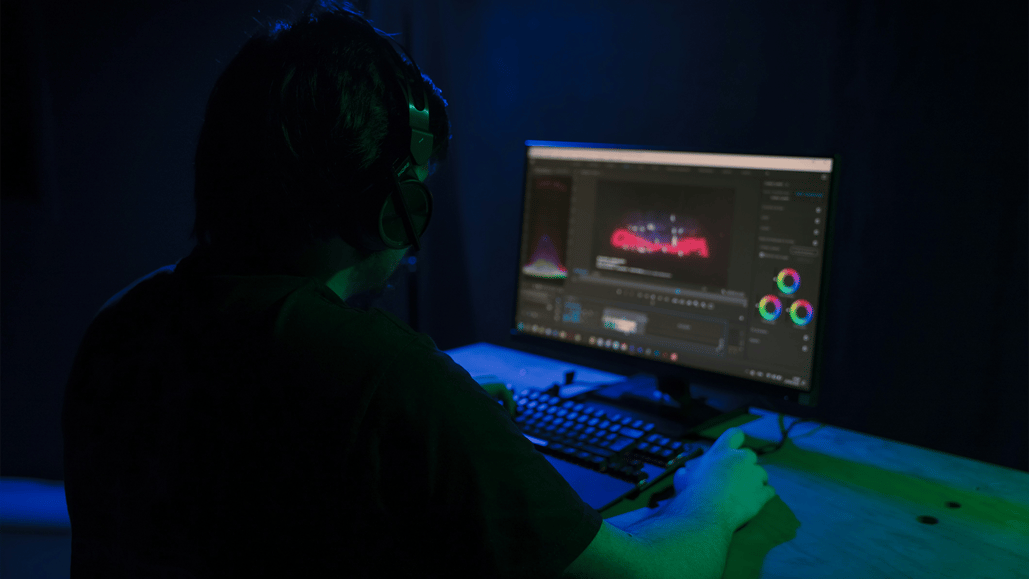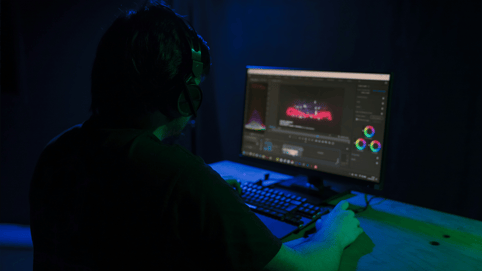Although it is a massive part of the editing process, audio is often the forgotten element in video editing. It makes sense, too. Everyone is always focused on the look and style of a video, as well as the actual cuts and transitions between shots. Yet, almost always, editors and multi-talented creators seem to only think about audio at the very end of their edits.
However, it doesn’t have to be this way. Audio is a huge component of any video. Whether you’re making social media content, an ad campaign for a client, or even crafting your magnum opus, short or feature film, it’s important to focus on audio as much as the video.
If you’re new to video editing, though, there can be a lot to learn about how to work with audio in your video edits. One big question many beginners have is, “what is the best audio format for video editing?” Let’s explore this topic and go over everything you need to know about editing audio with your video projects.
The best video editing apps
Before we dive into the best audio format for video editing, let’s go over some of the best video editing software to consider. This is a crucial step to take initially, as the level of sophistication among different video editing platforms varies considerably.
If you’re using a beginner-friendly mobile blog video editing app on your smartphone, for example, you’ll likely want to use a single audio format. If you’re using a higher-end professional video editing platform, you may want to use a different audio format.
Here are some of the top options for the best video editing apps and platforms to consider.
Best Desktop or Laptop Video Editing Platforms:
Best Smartphone Video Editing Apps:
The desktop or laptop options will be significantly more advanced, offering more sophisticated controls for editing audio and video. As such, they’re also more complicated to learn and more expensive.
Smartphone video editing apps are easier to use, and many offer free versions to help you get started. These will be better options for creators looking to edit videos shot on smartphones, which are often used more exclusively for social media.
Audio Formats Explained
Once you’ve picked the right video editing app or software for your level, you can then move on to do some research on the different audio formats. Basic breakdowns of audio formats usually put the different formats into these three categories:
- Uncompressed audio formats
- Lossless audio formats
- Lossy audio formats
Uncompressed audio formats offer the highest sound quality, but they are also more cumbersome and often have significantly larger file sizes. Lossless formats are not as high-quality, but they are still quite respectable and are used in many instances, with medium file sizes. Lossy formats are the smallest in size, but also offer the lowest quality.
Choosing the best audio format for editing videos
Now, as we’ll explore below, for most video editing purposes these days, you’ll want to opt for uncompressed or lossless formats. There are a few instances where it might make sense to use lossy audio formats like AAC or MP3; however, with modern cameras and smartphones, as well as the advanced upload and hosting capabilities of today’s social media platforms, it’s not too much of an ask to handle lossless or uncompressed audio.
For the best uncompressed audio formats, your top choices are WAV or AIFF files. For your lossless formats, you’ll want to use FLAC and ALAC.
These formats will offer the highest quality, the most editing latitude, and other helpful aspects, such as timecode support, making them the best options for editing and post-production.
Streamline your workflows with Soundstripe Integrations
If all of these formats are still confusing to you, there is another, much more straightforward way to work with audio in your editing projects: using these helpful Soundstripe Extensions. As one of the top and most trusted music licensing resources in the world, Soundstripe offers integrations and plugins for several of the most popular video editing platforms.
These plugins are a great option, as they allow editors to browse music directly from their video editing app of choice. Then, simply click to purchase and download full songs and stems, which are instantly added to their projects. No worries or hassles about finding songs or securing the right audio file formats.
If you’d like to check out some Soundstripe integrations today, here are some top picks to consider:
- Adobe Premiere Pro: Search, find, and license the perfect track—all without leaving Premiere Pro. Soundstripe’s plugin keeps your workflow smooth and your creativity uninterrupted.
- Adobe Express: Effortlessly browse Soundstripe’s extensive library of premium music and instantly add tracks by Grammy-winning artists, right inside Adobe Express.
- Frame.io: Collaborate seamlessly by integrating Soundstripe into your post-production workflow with Frame.io.
- Twitch: Amplify your streams with copyright-safe music—designed for Twitch creators, powered for impact.
You can find out more about signing up and getting started with the above integrations on the Soundstripe integration page here.
Tips for editing audio in your video projects
Once you’ve selected the right video editing software, chosen your preferred audio format, and reviewed the helpful Soundstripe integrations, it’s really up to you to dive into your edits and tailor your audio as you see fit.
To further help you with your audio for video editing journey, here are some additional tips and tricks to keep in mind.
- Consider downloading preview tracks to use as placeholders in your edits before deciding if a track is right for your project.
- Explore our library of royalty free sound effects to add extra emphasis to your videos.
- Try out Soundstripe’s AI Song Editor to instantly edit your audio track to match the length of your animated videos.
From there, as long as you remind yourself early and often that audio matters and is an important part of the video editing process, you’ll be ahead of your competition and ready to make the best videos, films, and advertising content possible.





